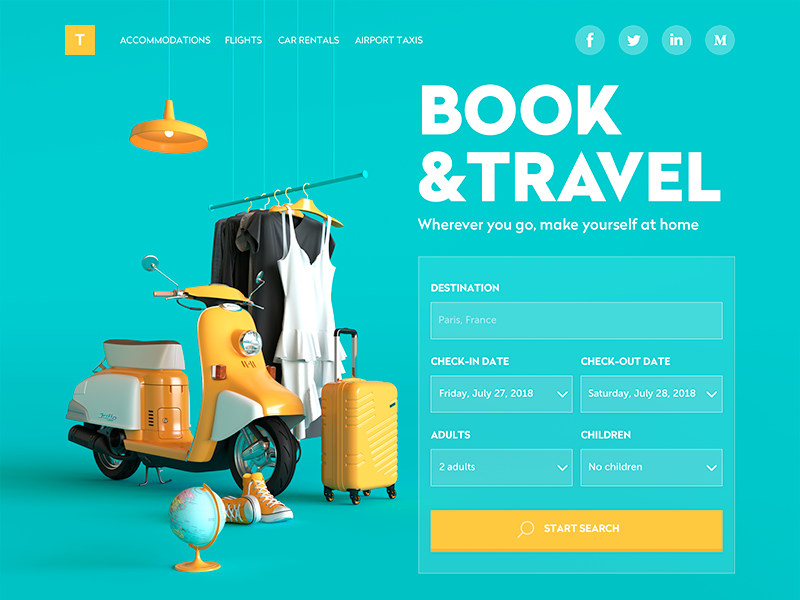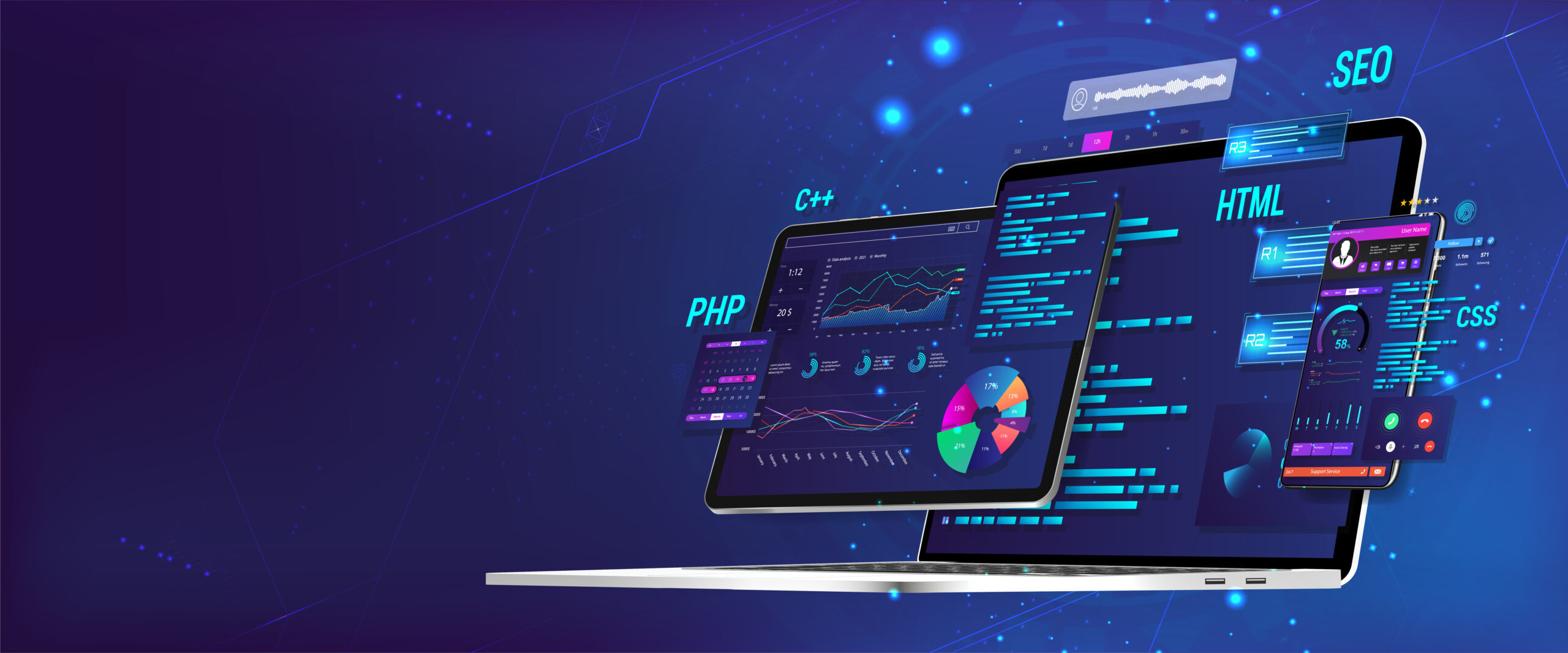Web Design London Ontario Deals for Every Price Range
Web Design London Ontario Deals for Every Price Range
Blog Article
Exactly How to Properly Incorporate Visual Appeals and Functionality in Internet Layout
When developing an internet site, you require to strike a balance in between looks and capability. It's not almost looking good; your layout must additionally serve a purpose and guide customers effectively. By concentrating on simpleness and intuitive navigating, you can develop an appealing experience. What components really boost functionality while maintaining visual allure? Let's check out the essential concepts that can result in an unified mix of beauty and function.
Understanding the Relevance of Looks and Functionality
When you make an internet site, recognizing the balance in between aesthetic appeals and performance is crucial for developing an effective customer experience. An aesthetically attractive site grabs attention, however it's the functionality that keeps individuals engaged. If your website looks excellent but is difficult to navigate, site visitors will swiftly shed passion and leave.Consider your target market and what attracts them in. You desire to develop a design that shows your brand while ensuring convenience of usage. Structured layouts, user-friendly navigating, and clear telephone calls to activity can boost both visual appeals and performance.

Concepts of Efficient Web Layout
To create a reliable web design, you require to adhere to numerous key concepts that enhance both individual experience and visual charm. Initially, focus on simpleness; a clean format assists customers navigate conveniently. Use a regular color plan and typography to keep coherence throughout your website. This fosters experience and trust.Next, ensure your layout is receptive. Users gain access to websites on numerous devices, so your style should adjust seamlessly. Take notice of aesthetic power structure; emphasize important elements with color, dimension, or positioning to lead customers' focus.Finally, include ample white space. It prevents clutter and makes content more digestible. Bear in mind, reliable internet layout equilibriums aesthetic appeals and performance, so every layout option must offer a function. By complying with these principles, you'll create a website that's not just aesthetically attractive yet additionally user-friendly, inevitably maintaining visitors involved and urging them to return.
Focusing On Individual Experience
When focusing on individual experience, you'll desire to begin by recognizing what your individuals really require. Simplifying navigation layout can make a big distinction in exactly how easily they locate what they're looking for. Additionally, improving aesthetic pecking order assists guide their focus to the most essential components on your website.
Understanding Customer Needs
Comprehending individual demands is vital for developing an interesting internet experience that maintains site visitors returning. To attain this, you must identify the goals and preferences of your target audience. Start by conducting customer research, like meetings or studies, to collect understandings on what customers worth most. Take note of their pain points and obstacles when engaging with similar sites. This details permits you to customize your layout, making sure performance straightens with user expectations. Additionally, consider producing individual personalities that represent various sections of your target market, assisting you envision their demands throughout the layout procedure. When you prioritize recognizing customer requirements, you develop a website that not only looks great but likewise provides a smooth, satisfying experience that promotes loyalty.
Streamlining Navigation Design

Enhancing Aesthetic Power Structure
A strong aesthetic power structure is necessary in leading customers with your internet site and ensuring they engage with vital web content. To achieve this, utilize shade, dimension, and spacing strategically. Make essential aspects like headings larger and bolder than body text, attracting attention right away. Utilize contrasting shades to highlight contact us to action, motivating clicks. In addition, use sufficient white space to different areas, making material digestible and inviting.Consider the flow of information; arrange components logically, leading individuals' eyes from one point to the next. Usage aesthetic hints, like lines or arrows, to direct focus. By prioritizing visual power structure, you improve customer experience and raise the chance of conversions, ensuring your website is both cosmetically pleasing and functionally effective.
Shade Theory and Its Impact on Use
While choosing the best shades for your site may appear like a small information, it greatly affects use and individual experience. Color impacts how customers perceive get more info information and can impede or enhance navigation. Contrasting colors can assist crucial components stand out, making it less complicated for visitors to find what they need.Additionally, think about the psychology of colors: blue usually motivates trust fund, while red creates necessity. Knowing your target market can direct your color options, guaranteeing they reverberate well.Moreover, regular shade plans help build brand identity, making your site more memorable. Be cautious-- too lots of colors can overwhelm customers. Adhere to a minimal palette that matches your web content and maintains clarity.Incorporating availability is also necessary; validate your shade combinations are pleasant for those with visual impairments. By thoughtfully applying shade concept, you'll boost functionality and produce a more appealing individual experience.
Typography: Harmonizing Design and Readability
Color options set the phase for your web site, however typography plays a just as crucial duty in enhancing customer experience. You want your text to interact plainly while also showing your brand's individuality. Start by selecting fonts that are not just appealing however likewise clear. Sans-serif typefaces frequently work well for digital displays, as they're simpler to review at numerous sizes.Maintain a hierarchy by utilizing various font dimensions and weights; this overviews customers through your content effortlessly. Think about line spacing and letter spacing; as well limited can annoy visitors, while also loosened can disrupt the flow. Limitation your font style choices to two or 3 to maintain the layout cohesive.Finally, always check your typography throughout various tools and web browsers. What looks great on one display might out another. Stabilizing design with readability guarantees that your message resonates, maintaining your target market engaged and notified.
Receptive Style: Making Looks Service All Tools
To assure your site looks fantastic on any type of device, you'll require to welcome receptive layout concepts. This approach guarantees your website adapts to various screen dimensions, offering an excellent user experience. Start by utilizing liquid grids and adaptable pictures that scale perfectly. Instead of taken care of measurements, go with percents and family member units, enabling your layout to adjust dynamically.Next, carry out media inquiries in your CSS. These allow you apply different designs based upon tool qualities, like display width. By doing this, you can preserve aesthetic allure while ensuring functionality.Don' t ignore touch targets; make sure switches and links are easy to tap on smaller sized screens. Focus on crucial web content, so users can easily browse your website no matter their device. By concentrating on these components, you'll develop an engaging, aesthetically appealing experience that satisfies the demands of all users, whether they get on a desktop computer, tablet computer, or smart device.
Conducting Usability Screening for Continuous Enhancement
To improve your website design, you need to set clear use goals that line up with user demands. By performing user examinations, you can gather valuable feedback on how genuine people communicate with your website. Examining these results will certainly help you make educated enhancements and create a much more efficient user experience.
Defining Usability Goals
While looks can draw customers in, defining use goals is essential for ensuring their experience continues to be smooth and rewarding. Start by recognizing what you desire customers to attain on your website (website design london Ontario). Consider their behaviors, tasks, and requirements. Are they looking for information, buying, or authorizing up for a newsletter? Establish clear standards to measure success, like task completion rates or time on job. Focus on instinctive navigating, easily accessible content, and receptive design to improve functionality. Routinely take another look at these objectives as user expectations evolve. By defining functionality goals, you develop a framework for reviewing and boosting your website's performance. This focus on usability not only improves individual satisfaction but also reinforces the overall efficiency of your layout
Conducting Individual Tests
Performing user examinations is vital for refining your site and guaranteeing it fulfills your target market's requirements. Begin by identifying your target users and developing an examination strategy that details your goals. Utilize a mix of qualitative and quantitative approaches, such as studies, interviews, and task-based observations, to gather extensive feedback. Invite individuals to navigate your site while you observe their communications and keep in mind any kind of problems they experience. Encourage open discussion to record their thoughts and feelings concerning the layout and performance. Keep sessions brief and concentrated, ensuring you cover vital locations without frustrating individuals. Finally, make certain to record all findings, as this details will certainly be very useful for making informed layout choices that enhance both looks and functionality.
Evaluating Examination Results
Just how can you successfully evaluate the outcomes of your functionality examinations to drive continual enhancement? Beginning by categorizing comments into usual themes. Try to find patterns in user habits that highlight discomfort points or areas for enhancement. Usage quantitative information, like task conclusion prices and time on task, to determine usability objectively. Don't neglect to consider qualitative insights from customer remarks; they usually reveal underlying problems that numbers can't reveal. Prioritize the most impactful searchings for and develop workable items for your style group. Bear in mind, it's about iterating-- apply adjustments, then test once more. This cycle of screening, evaluating, and refining assists you equilibrium aesthetic appeals and capability, guaranteeing your internet site meets user requirements properly while keeping aesthetic appeal.
Frequently Asked Concerns
Just how Do I Pick the Right Shade Scheme for My Website?
To choose the right color palette for your site, consider your brand's character, target audience, and emotional effect (website design london Ontario). Use color psychology, create consistency, and warranty readability. Examination mixes to see what resonates finest with visitors
What Tools Can Assist With Web Design Looks and Performance?
You can make use of tools like Adobe XD, Figma, and Sketch to boost your internet layout's appearances and capability. These systems provide user-friendly interfaces, collaboration features, and pre-made templates to simplify your imaginative process and improve your designs.
Just How Can I Integrate Animations Without Jeopardizing Functionality?
To include computer animations without jeopardizing functionality, focus on refined effects that enhance customer experience. Usage CSS animations for smoother communications, warranty quick lots times, and examination on numerous gadgets to maintain efficiency while adding aesthetic charm.
What Prevail Blunders to Stay Clear Of in Website Design Looks?
When developing, avoid messy layouts, inadequate shade choices, and irregular typefaces. Don't forget mobile responsiveness, as it can push away users. Confirm your layout aligns with your brand name, creating a smooth experience that engages site visitors efficiently.
How Usually Should I Update My Web site's Layout for Ideal Visual Appeals?
You need to update your web site's style every 1-2 years to stay on top of patterns and keep optimal aesthetics. On a regular basis renewing visuals assists involve warranties and visitors your site stays easy to use and attractive. When you make a website, recognizing the balance between looks and capability is crucial for developing a reliable user experience. To produce an efficient internet layout, you require to stick to several key principles that improve both individual experience and aesthetic appeal. Individuals accessibility websites on various devices, so your design ought to adjust perfectly. When prioritizing user experience, you'll want to begin by understanding what your users truly require. Start by conducting user research, like interviews or surveys, to collect understandings on what individuals worth most.
Report this page